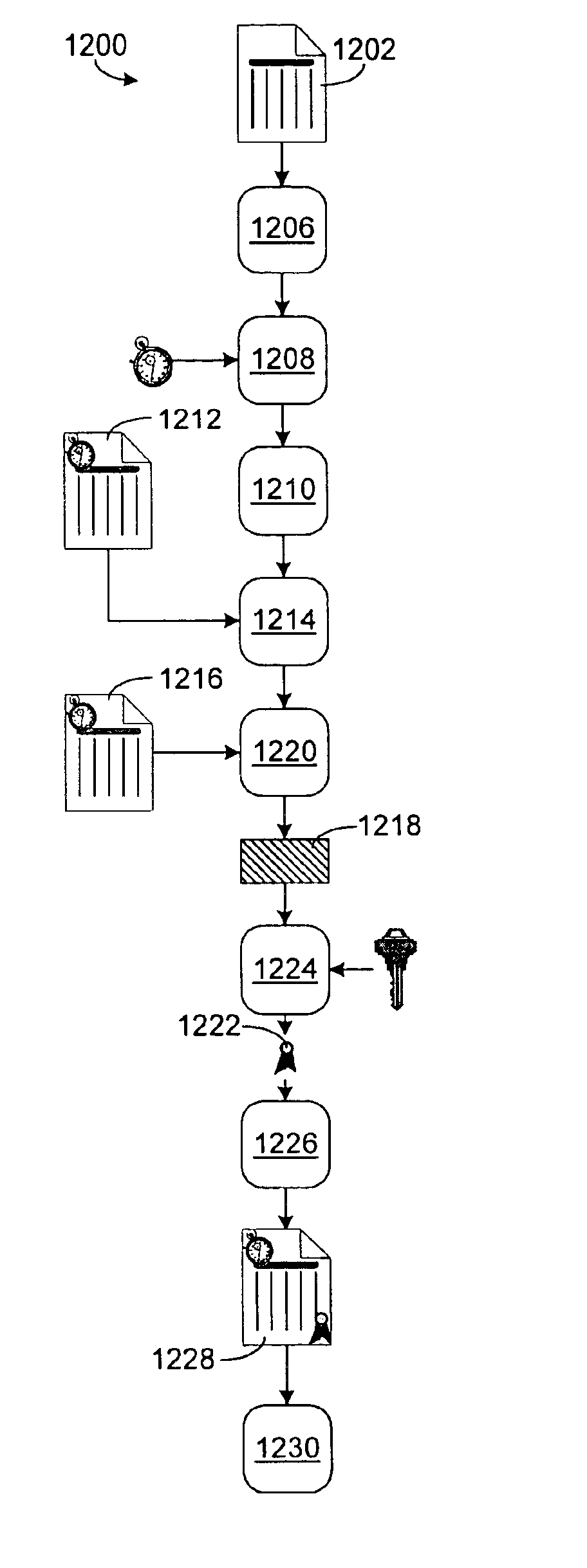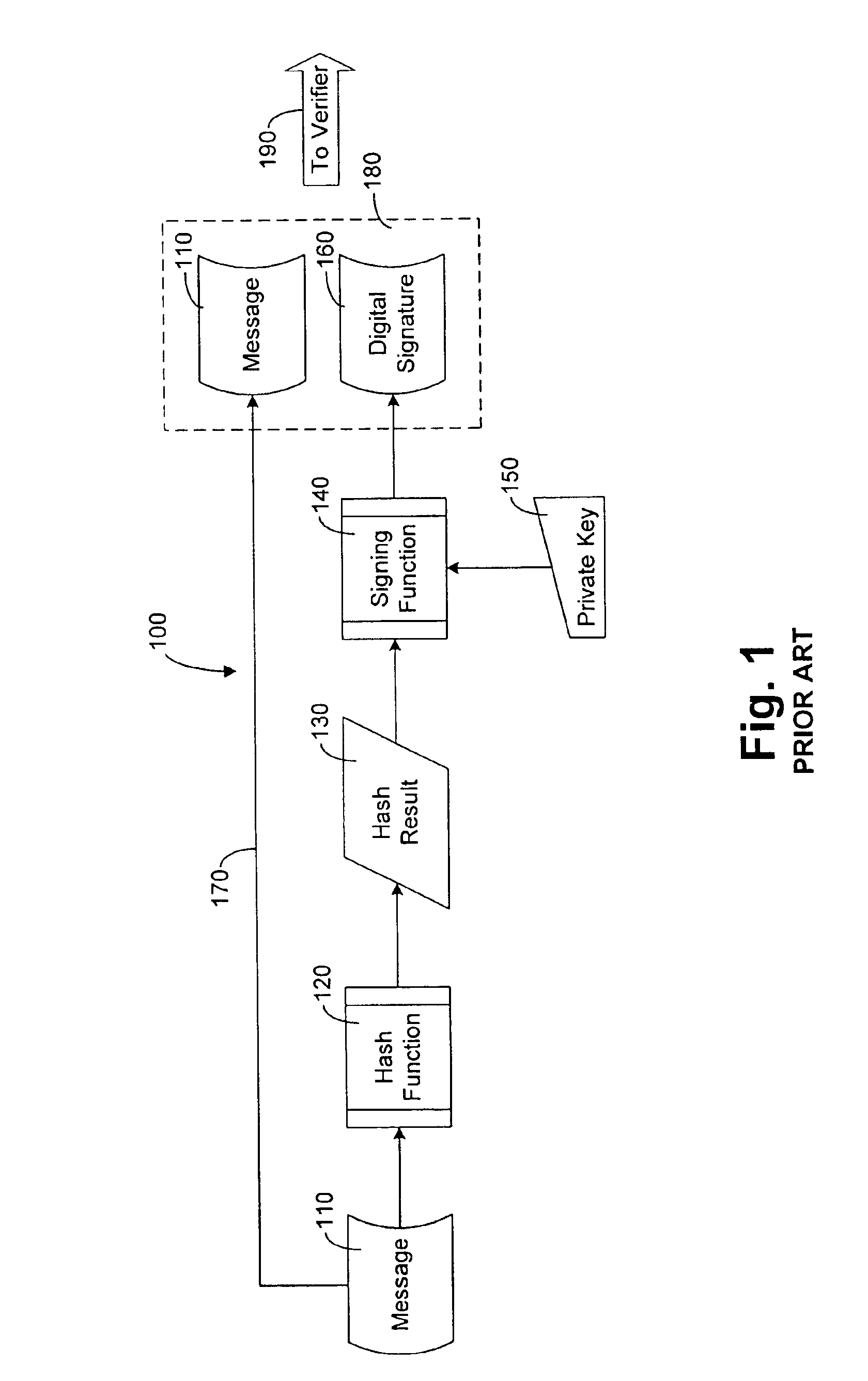Method and system for determining and maintaining trust in digital data files with certifiable time
a digital data file and certifiable time technology, applied in the field of digital data files, can solve the problems of trivial user reset of the rtc, no simple way of determining whether the rtc is set, and it is almost impossible in the prior art to establish with certainty the date and time of a particular digital data file in a given computing. , to achieve the effect of preventing fraud in digital data files
- Summary
- Abstract
- Description
- Claims
- Application Information
AI Technical Summary
Benefits of technology
Problems solved by technology
Method used
Image
Examples
Embodiment Construction
[0106]A system 500 according to the present invention is shown generally in FIG. 5. System 500 suitably comprises a computing means 520, an input means 540, and a fraud prevention means 560, each of which is operatively coupled together. Computing means 520 more specifically comprises a general-purpose computer, such as a personal computer (PC). Input means 540 more specifically comprises any conventional means of inputting digital data to a PC such as a keyboard, a mouse, a touchpad, etc.
[0107]Suitable such keyboards include those of the type manufactured by Key Tronic Corporation, Spokane, Wash., U.S.A., and sold under the trademark Lifetime™. These include the Lifetime Classics™, a standard 104-key keyboard adapted for use with PS / 2 or AT-style keyboard ports; the Lifetime Classic WirelessT™, a battery-operated standard keyboard adapted for use with PS / 2 or AT-style keyboard ports through infrared means; the Lifetime Trackball™ and Lifetime Trackball Wireless™, both of which are ...
PUM
 Login to View More
Login to View More Abstract
Description
Claims
Application Information
 Login to View More
Login to View More - R&D
- Intellectual Property
- Life Sciences
- Materials
- Tech Scout
- Unparalleled Data Quality
- Higher Quality Content
- 60% Fewer Hallucinations
Browse by: Latest US Patents, China's latest patents, Technical Efficacy Thesaurus, Application Domain, Technology Topic, Popular Technical Reports.
© 2025 PatSnap. All rights reserved.Legal|Privacy policy|Modern Slavery Act Transparency Statement|Sitemap|About US| Contact US: help@patsnap.com



